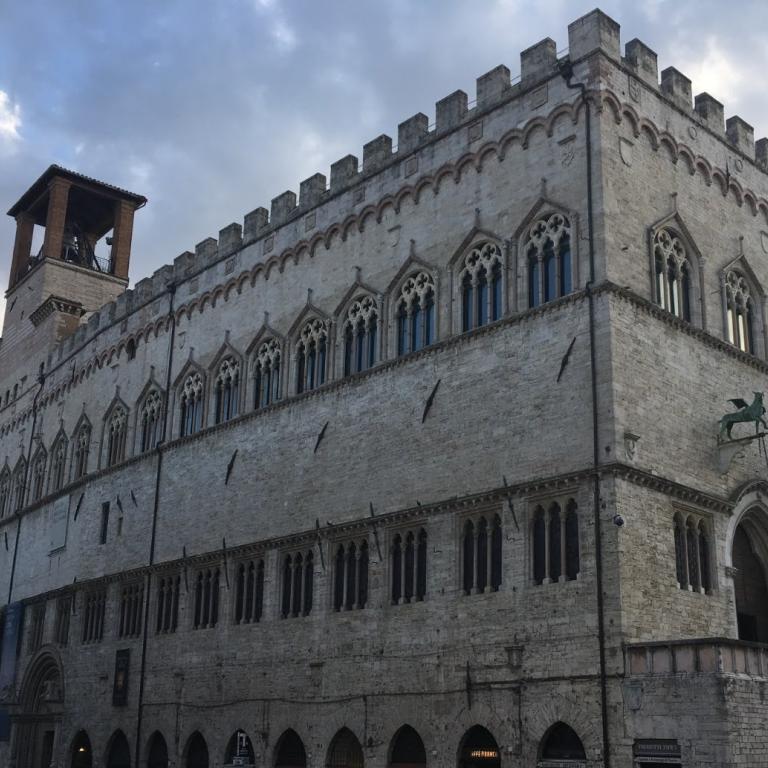Macroeconomic Forecasting and Analysis in the Machine Learning Era
Perugia, 17-21 July 2023
Director
Juri Marcucci
Bank of Italy
Via Nazionale 91, 00184 Rome, Italy
Email: juri.marcucci@bancaditalia.it, juri.marcucci@gmail.com
Lecturers
- Philippe Goulet Coulombe , Université du Québec à Montréal
- Dalibor Stevanovic, Université du Québec à Montréal
Course description
Successful deployment of Machine Learning (ML) methods in various areas of science requires in-depth understanding of algorithms and domain knowledge. This class sits at the nexus of those two ingredients for the evermore timely application of macroeconomic forecasting and analysis. Its goals are twofold. First, we aim to equip researchers and practitioners with the necessary tools for utilizing modern ML methods in empirical macroeconomic analysis – a skillset increasingly sought after in industry, government, and academia. Second, we aim at fostering the mindset and the intuition necessary to build their own customized ML algorithms.
We start by surveying the large body of literature of traditional macroeconomic forecasting, with an accent on the key developments of the 2000s, like factor models and other (linear) big data techniques. Then, we move on to introduce ML concepts and philosophy, followed by its canonical ancient and modern algorithms. Their application, as well as thorough discussions of when and where they are expected to work, and why, will be next. Finally, a significant amount of time will be dedicated to recent papers proposing customized ML algorithms for latent states extraction, enhanced interpretability, signal-to-noise ration maximization, density forecasting, and other essential usages in macroeconomic forecasting and empirical macro analysis.
Tentative Schedule
Day 1 AM
- Brief review of time series econometrics
- Introduction to theory of forecasting
- Introduction to Machine Learning
Day 1 PM
- Data-rich predictive modeling: regression analysis in high dimensions
- Sparse: Penalized regression
- Dense: Factor models and principal component analysis
- Supervised against unsupervised statistical learning
- Sparse modeling:
- Regularization
- Variable selection
Day 2 AM - PM
- Dense modeling:
- Dynamic factor analysis
- Cross-validation for time series
- POOS
- Blocks
- Linear forecasting models in data-rich environment with applications to macroeconomic variables like industrial production and inflation (Kotchoni et al., 2019)
- Dynamic factor models
- Regularized predictive regressions
- Regularized data-rich model averaging
- In-class simulation and empirical applications
Day 3 AM
Introduction to nonlinear forecasting in data-rich environment
- Approximating nonlinearity in predictive regressions:
- Polynomials
- Kernel trick
- Regression trees
Day 3 PM
- Modern ML for nonlinear forecasting in data-rich environment (I)
- Tree ensembles
- Boosting
- Random Forest
- Their many virtues, especially in low SNR environments
- Certain limitations
- Tree ensembles
Day 4 AM
- Interpretability of off-the-shelf ML tools
- Variable importance
- Partial dependance plots
- Shapley values
- (Severe) Limitations
- Modern ML for nonlinear forecasting in data-rich environment (II)
- Neural Networks
- Basics
- Practical aspects
- Benefits and costs
- Neural Networks
Day 4 PM
- Developing ML- techniques tailored for macroeconomic analysis and forecasting (I)
- Macroeconomic Random Forest, and interpretability through TVPs
- Examples in R
- Forecasting Arctic Sea Ice
- Deep Time-Varying Parameter VARs
- Addendum: MARX transformation
- Macroeconomic Random Forest, and interpretability through TVPs
Day 5 AM
- Developing ML- techniques tailored for macroeconomic analysis and forecasting (II)
- Hemisphere Neural Network, and extracting latent economic states
- Hemisphere Neural Network for Density Forecasting, (examples in Python)
- Moving Target ML-econometrics
- The MACE
- Building maximally-predictable macroeconomic aggregates, and examples in R
- Maximally Machine-Learnable Portfolios, and applications to stock returns forecasting
References:
Goulet Coulombe, P., Leroux, M. Stevanovic, D. and S. Surprenant (2022). How is Machine Learning Useful for Macroeconomic Forecasting? Journal of Applied Econometrics, 37(5), 920-964.
Kotchoni, R., Leroux, M. and D. Stevanovic (2019). Macroeconomic Forecast Accuracy in a Data-Rich Environment, Journal of Applied Econometrics, 34(7), 1050-1072.
Goulet Coulombe, P., Leroux, M., Stevanovic, D., & Surprenant, S. (2021). Macroeconomic data transformations matter. International Journal of Forecasting, 37(4), 1338-1354.
Goulet Coulombe, P. (2020). The macroeconomy as a random forest. Available at SSRN 3633110.
Goulet Coulombe, P. (2022). A Neural Phillips Curve and a Deep Output Gap. arXiv preprint arXiv:2202.04146.
Diebold, F. X., Goebel, M., & Goulet Coulombe, P. (2022). Assessing and Comparing Fixed-Target Forecasts of Arctic Sea Ice: Glide Charts for Feature-Engineered Linear Regression and Machine Learning Models. arXiv preprint arXiv:2206.10721.
Goulet Coulombe, P., & Goebel, M. (2023). Maximally Machine-Learnable Portfolios. Forthcoming.
Goulet Coulombe, P., & Gaudreault, F.A. (2023). Building Maximally Predictable Macroeconomic Aggregates. Forthcoming.
Goulet Coulombe, P., & Frenette, M. (2023). Moving From Reactive to Proactive Volatility Modelling with Hemisphere Neural Networks. Forthcoming.
Borup, D., Goulet Coulombe, P., Rapach, D., Schütte, E. C. M., & Schwenk-Nebbe, S. (2022). The Anatomy of Out-of-Sample Forecasting Accuracy.
Lecture notes, Matlab, R, and Python codes and data will be provided.
The Module will be held in the Bank of Italy's Scuola di Automazione per Dirigenti Bancari (S.A.Di.Ba.), via San Marco n.54, Perugia. Participants will be accommodated at S.A.Di.Ba.. (in case of reduced availability of rooms in the Centre, they will be accommodated in local hotels).
Lectures and tutorials will be in English, with the following schedule:
- Monday to Thursday: lectures 9:00-12:30, 14:30-18:00
- Friday: 9:00-13:30
Contacts
- For more information: Laura Urraci e-mail: info@side-iea.it
- For administrative issues : Laura Urraci (admin@side-iea.it), Alessandra Picariello (alessandra.picariello@unibo.it), phone:+39 375 5112161, +39 340 6735001
- For travel and accommodation: Maria Assunta Colacci (mariaassunta.colacci@bancaditalia.it), phone 075-5447613 cell. 3498725455
